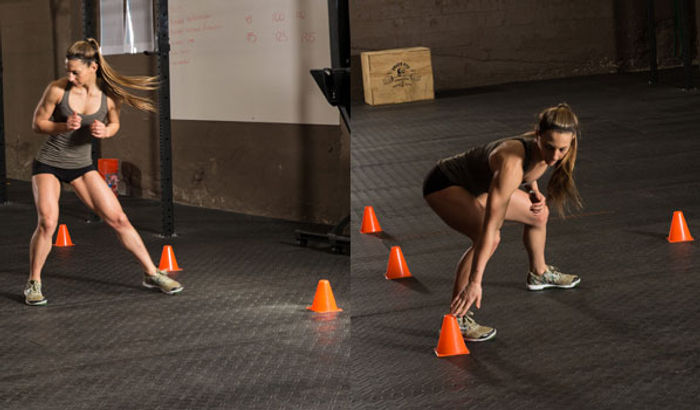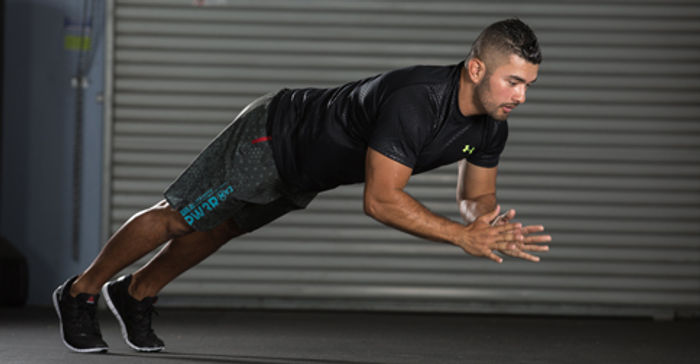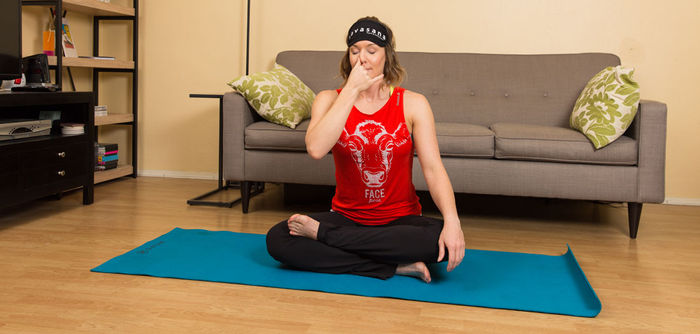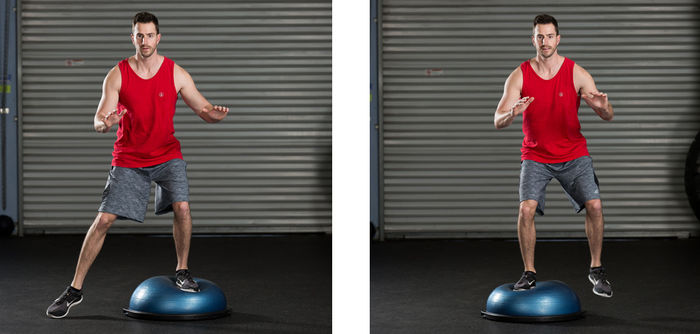Stress comes in many varieties and at some point in time, we’ve all experienced the type of stress that triggers the fight-or-flight response, which in turn activates the sympathetic nervous system. This type of stress can leave us feeling frenzied all day long as we constantly bounce in and out of the stress response.
One of the best and most accessible tools we can use to decrease stress is to connect with our breath. During the stress response, the breath becomes light and shallow. When this happens, it is important to bring awareness to the breath to help refocus the mind. Conscious breathing ignites the relaxation response, which triggers physiological changes in our bodies, such as:
-Decreased heart rate, blood pressure, muscle tension and metabolism
-Increased levels of nitric oxide
-Promotion of digestion and synthesis of glycogen
-Promotion of SLUDD (salivation, lacrimation, urination, digestion and defecation)
These simple breathing exercises to reduce stress, which can be done anywhere, can help melt the stress away. Breathing works best when you wear comfortable clothes that are not restrictive in the torso. If you don’t have much time, try to practice these breathing techniques for one to five minutes. And when you can, practice these techniques for 10 to 15 minutes or even longer to fully explore their tremendous benefits.
1. Supine Diaphragmatic Breathing
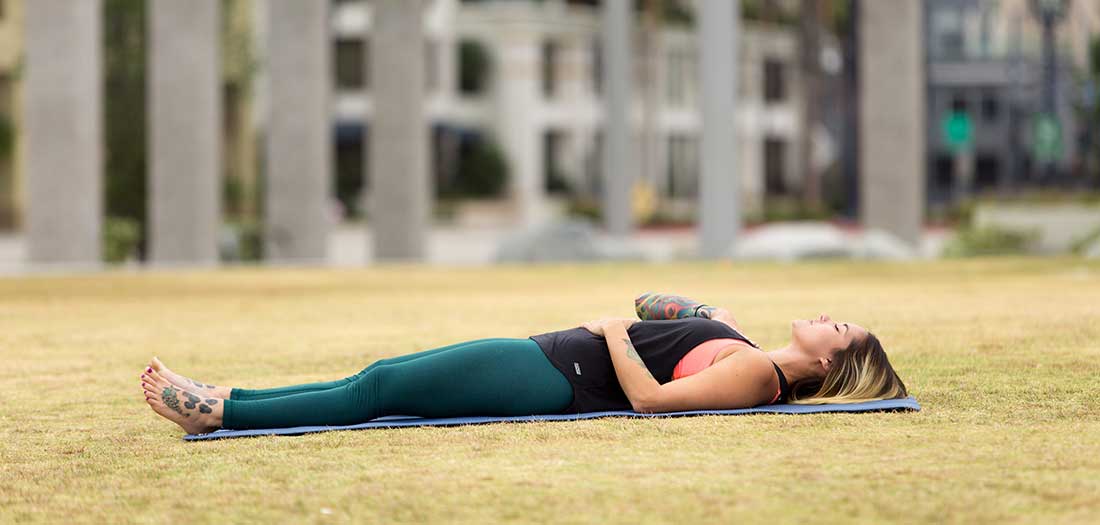
Lie on your back in a comfortable position and place your right hand on your chest and your left hand on top of your diaphragm. Breathe through your nose, filling the diaphragm and belly with your breath. The goal is to focus the breath into the visceral area without the chest rising. You can also do this exercise seated in a chair.
2. Matching the Inhale and Exhale Breaths
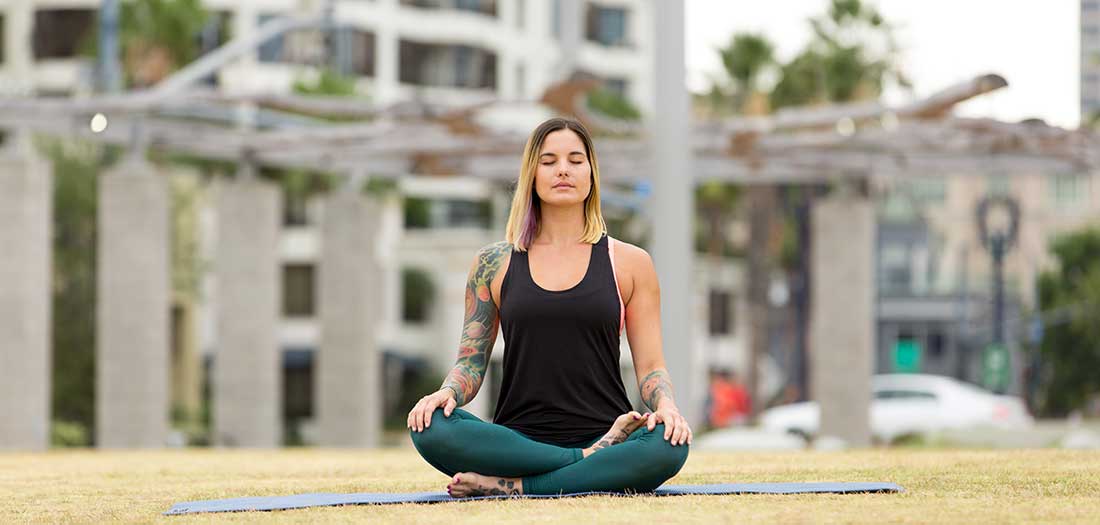
Sit in an upright position with a neutral spine, on the floor or in a chair. Begin to inhale through the nose and mentally count to five. Next, exhale through the nose, matching the breath to the same count of five. Be sure to initiate the breath in the diaphragm and imagine the breath flowing above and below the diaphragm, filling the entire torso. Once a five-count breath is achievable, increase the count to six, seven and 10-second breaths.
3. Three-Part Breath

Sit in a chair in an upright position with a neutral spine. Begin by taking three short inhalations through the nose. You want the inhalation to be natural and not rapid or forced. Once you’ve inhaled the three breaths, pause for a moment and then release with one deep exhale. You can release the breath through your mouth or nose. Pause at the completion of the exhalation and then repeat. Next, reverse the direction. Take one deep inhale through the nose, balloon-ing the diaphragm. Pause at the peak of the inhalation and then release three short, static exhalations either through the nose or the mouth. Pause at the completion of the exhalation and then repeat. Practice this for 10 rounds or for several minutes.
4. Alternate Nostril Breathing
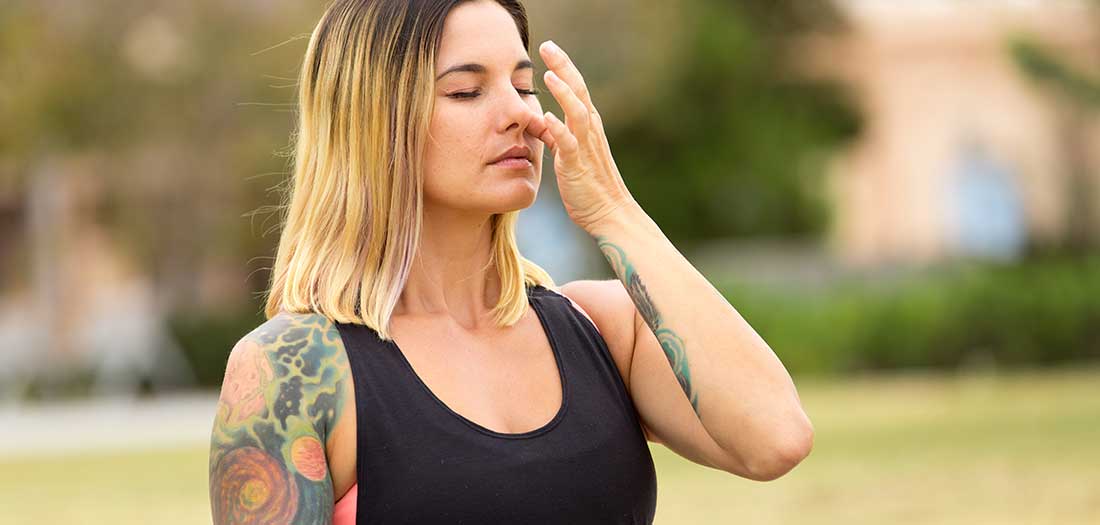
Sit in an upright position with a neutral spine, on the floor or in a chair. With your right hand, curl your index and middle fingers gently into the palm. Softly block the right nostril with your thumb and inhale through the left nostril. Block the left nostril with the ring finger and then exhale through the right nostril. Inhale through the right nostril. Block the right nostril and then exhale through the left nostril. Inhale through the left nostril. Continue this pattern for 10 rounds.
5. Jaw Release – Modified Lion’s Breath

Sit in an upright position with a neutral spine, on the floor or in a chair. Take a deep inhale through the nose, filling up the diaphragm, and at the peak of the inhalation, exhale through the mouth, opening the mouth wide and stretching the jaw with an “Ahhh” exhalation. Repeat this for several breaths.
6. Progressive Muscle Relaxation
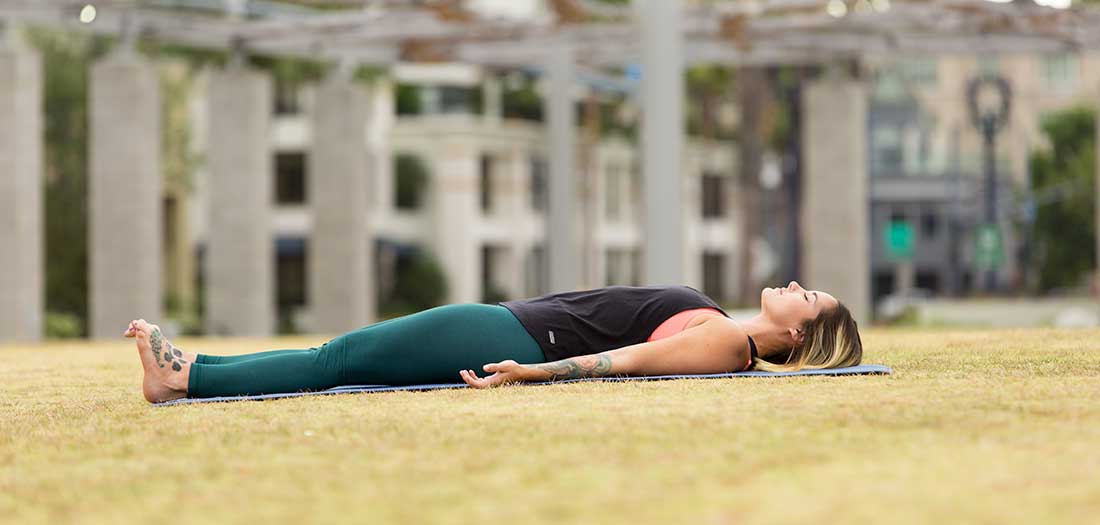
Lie comfortably on the ground. Make yourself nice and cozy, and place a blanket over the body if needed. You can either practice progressive muscle relaxation on your own, or use a guided meditation (there are lots of free guided meditations online).
Here is an easy way to guide yourself through this practice—start by relaxing with several deep breaths. Then inhale, contracting the muscles of the feet, scrunching the toes, and then exhale the breath while releasing the contraction.
Inhale and contract the calf muscles. Exhale and release the contraction. From here you can work each individual muscle. You want to work with a synergistic relationship between the breath and contraction of the muscles. It is best to start from the feet and move upward, or from the head and move downward through the toes. You can work individual muscles, a group of muscles or one side of the body simultaneously.
References:
Marksberry, Kellie. "Take a Deep Breath." The American Institute of Stress. 2012.
 by
by 







